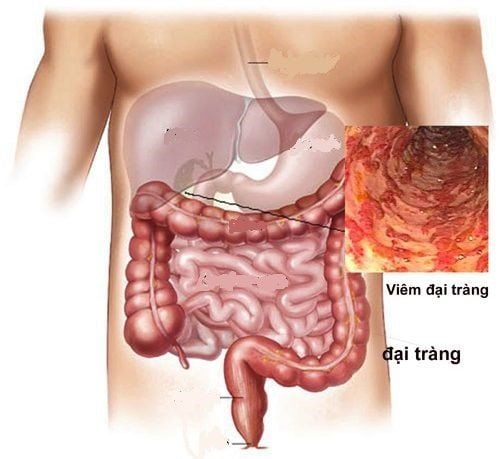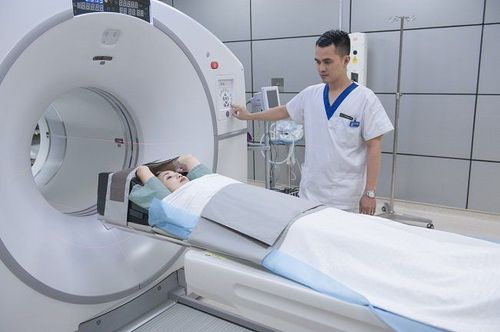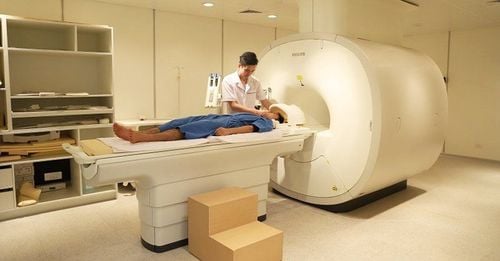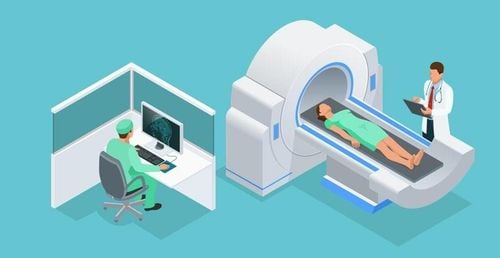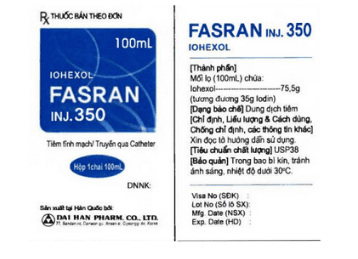This is an automatically translated article.
The article was professionally consulted by Doctor Trinh Le Hong Minh - Radiologist - Radiology Department - Vinmec Central Park International General Hospital. The doctor has many years of experience in the field of diagnostic imaging.Whole-body magnetic resonance imaging is a technique that is being used commonly in diagnostic imaging and disease treatment because of its high accuracy and detail. Currently, this technique is showing an important role in the general assessment of health status, diagnosis and early screening of cancer.
1. Overview of whole body magnetic resonance imaging
1.1 What is total body magnetic resonance imaging? Whole-body magnetic resonance imaging (whole body MRI) is a technique that uses a magnetic field and radio waves to create tomography images. Under the action of the above waves, the Hydrogen atoms in the body will absorb and release energy. This process is recorded, processed, and converted into image signals on film by the machine.This is a high-tech imaging technique, applying 3-D scanning technology of the whole body, giving images with sharpness, high contrast, clarity and detail. Therefore, large and small lesions in each organ and location to be investigated are clearly displayed. At the same time, doctors can also use MRI images for 3D reconstruction, thereby improving the efficiency of disease diagnosis and treatment.
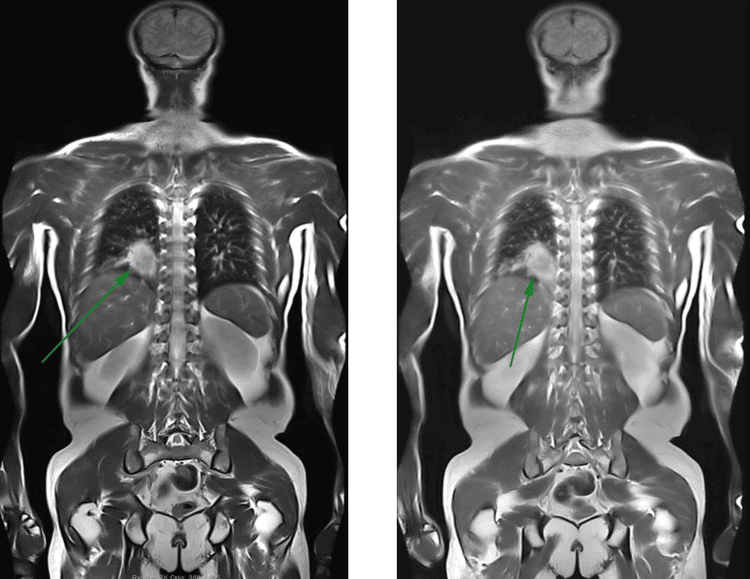
Head region: Helps detect tumors in the brain, meninges or maxillofacial tumors, vascular malformations brain, inflammatory foci, brain infection, brain degeneration, cerebral hemorrhage, cerebral infarction,...; Neck: Helps detect tumors in the nasopharynx, salivary glands, thyroid gland,...; Chest area: Helps to check for abnormalities in the breast, heart, mediastinum,...; Abdomen: Helps detect liver, kidney, pancreatic, biliary tract tumors; Spine region: Helps doctors evaluate inflammation of the vertebrae, spinal tuberculosis, herniated discs, spine spines, spinal tumours, spinal cancer or problems related to nerves, .. .; Pelvic - hip: Helps evaluate the pelvis, hip joints, prostate in men, detect uterine fibroids, ovarian cysts, bladder tumors, rectal tumors,...
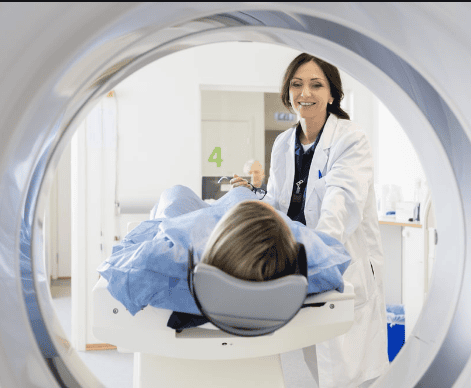
Quick scan time: Patients preparing for MRI only need to fast for 4 hours, shoot for about 45 - 60 minutes; Absolutely safe: The MRI technique does not use X-rays or invasive energy, so it is very safe and can be used for the whole fetus. Therefore, magnetic resonance imaging can be applied to screen diseases for healthy people, performed periodically without fear of affecting health; High accuracy: High-contrast full-body MRI images, detailed anatomy, and 3D reconstruction possible. At the same time, this method can accurately detect lesions that form and structure body parts. At the same time, the MRI image also contributes to the orientation of benign or malignant tumors; Reasonable cost: The cost of MRI is lower than that of PET/CT, suitable for use in routine disease screening.

Patient changes gown, removes jewelry or accessories that could interfere with the imaging field. Patients who wear medical equipment, pacemakers, cochlear implants, etc. may not be eligible for MRI; Patients with excessive anxiety or fear of narrow spaces can be used supportive drugs to reduce anxiety, keep psychological comfort; The patient can be injected with intravenous contrast to clearly expose the lesion; The patient can be given earplugs or headphones to limit noise during the shooting; Children may be able to listen to music to relieve stress during an MRI scan. During the scan
The technician will communicate with the patient through the intercom, ensuring that the patient is comfortable and ready to perform the MRI; During the imaging process, it is imperative to keep the patient's body still because movement will reduce the quality of the image obtained. Sometimes people have to hold their breath for an MRI; If the patient feels uncomfortable during the MRI scan, they can notify the technician and ask to stop the scan. After the scan
Rarely, patients experience side effects after magnetic resonance imaging; Contrast drugs can cause a number of reactions including nausea, headache, burning at the injection site,... A few can be allergic to the drug with itchy eyes, urticaria. Patients with unusual reactions should immediately notify the doctor.
2. Who should/shouldn't have full-body magnetic resonance imaging?
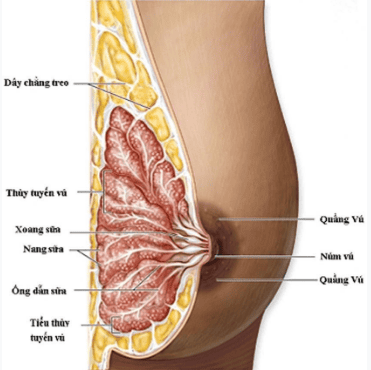
2.2 Cases to consider when taking an MRI
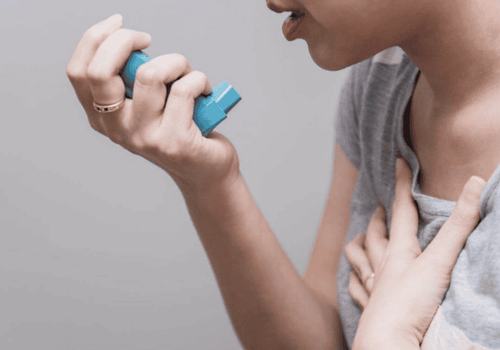
Pregnant women (especially under 12 weeks) or breastfeeding women should consult their doctor before taking the scan; People with medical conditions including asthma, heart disease, fear of narrow spaces, severe kidney disease, neurological problems,...; People with electronic devices installed in the body such as pacemakers, metal stents in blood vessels, ... because metal foreign bodies in the body can interfere with waves, leading to inaccurate MRI results. corpse. Whole-body magnetic resonance imaging is a high-tech application of imaging diagnostic methods, helping to detect diseases early, safely and effectively. When assigned to perform this technique, patients need to coordinate with all instructions of doctors and technicians to obtain the most accurate diagnosis results.
Vinmec International General Hospital put into use the magnetic resonance imaging machine 3.0 Tesla Silent technology. Magnetic resonance imaging machine 3.0 Tesla with Silent technology of GE Healthcare (USA).
Silent technology is especially beneficial for patients who are children, the elderly, weak health patients and patients undergoing surgery. Limiting noise, creating comfort and reducing stress for customers during the shooting process, helping to capture better quality images and shorten the shooting time. Magnetic resonance imaging technology is the technology applied in the most popular and safest imaging method today because of its accuracy, non-invasiveness and non-X-ray use.
Please dial HOTLINE for more information or register for an appointment HERE. Download MyVinmec app to make appointments faster and to manage your bookings easily.





